Don't wanna be here? Send us removal request.
Text
Timeline for Hiring an HR Assistant Explained

Recruiting metrics often highlight the time it takes to hire someone. The HR assistant recruiting journey can vary significantly based on the specific role and the organization. Initially, applicants submit their materials for review by a hiring manager, who conducts interviews with promising candidates and ultimately makes offers to those deemed suitable. Several factors influence the overall length of this process. The factors may include the specific needs of the hiring team, seniority, salary discussions, and other variables. This article will discuss the ideal duration of recruitment for HR assistants.
What is the Timeline for Hiring an HR Assistant?

A frequently tracked metric in recruitment is time-to-hire. This metric quantifies the duration from a candidate's initial application to their job offer acceptance. Consequently, it sheds light on two key aspects of the recruiting process: gauges the efficiency of candidate processing, evaluation, interviewing, and offer extension. A prolonged time to hire suggests inefficiencies and bottlenecks within the system. This metric reflects a candidate's perspective. Candidates prefer a swift hiring process, such as two weeks, over a lengthy one, like two months. Therefore, a quicker turnaround time typically enhances the overall candidate experience. The primary question is: How long does an HR assistant recruitment process take? The duration varies and depends on several factors. While there is no definitive answer, it can range from a week to over a month. Key determinants include the nature of the responsibilities, an organization's hiring practices, the applicant pool size, and the number of interviews involved. For instance, some employers fill entry-level service roles in a week or two. Conversely, organizations seek specialized skills, such as marketing or CRM tool skills. These skills may have extended processes lasting 30 days or more.
What Determines the Duration of HR Assistant Recruitment?

The hiring timeline is complex, as several elements influence its duration. Factors such as replacement positions or new ones and the experience level of the hiring manager all play a role. ● Organization size: Larger organizations, often dealing with a larger pool of applicants, typically experience longer hiring cycles. Less experienced hiring managers may also contribute to extended timelines. This is not a reflection of their overall competence. But this is their learning curve in navigating the recruitment process. Their limited history with successful hires might lead to a more cautious approach, prompting them to evaluate maximum candidates. Similarly, newly created roles often involve higher ambiguity. ● Position and Seniority: The hiring team may still be defining the scope of the HR position, potentially leading to a more extensive search to gauge market expectations. The seniority of the role can also affect the hiring timeline. Scheduling conflicts among managers or stakeholders can necessitate additional interviews, which inherently lengthens the process. ● Payscale: The hiring journey does not conclude with a job offer. Salary negotiations can introduce further delays, contingent on the flexibility of both parties. ● Screening: Certain positions, particularly in government or sensitive industries, may require drug screenings, thorough background checks, or polygraph tests. Depending on the number of individuals requiring screening, these procedures can postpone a start date by several weeks.
How to Improve Prolonged Time-to-Hire for HR Assistants?
Recruiting today emphasizes speed. However, recent industry reports indicate average hiring times are longer than ever. This increase raises per-hire costs and creates a significant risk of losing top-tier candidates. Lengthy hiring processes can lead desirable applicants to accept other offers, causing companies to miss out on potentially exceptional employees. Therefore, the question becomes how organizations can shorten their time to hire and time to fill for HR assistant recruiting. Let’s explore! ● AI-powered interview question generators can simplify the interview process by creating customized questions tailored to specific roles and interview formats. Scheduling software can also alleviate scheduling difficulties. ● Creating detailed and accurate job descriptions that communicate required skills, qualifications, and responsibilities is also beneficial. This targeted approach attracts genuinely interested and qualified candidates, minimizing the need for broad searches. Finally, a data-driven, adaptable recruitment strategy is essential.
Conclusion
A well-defined recruitment timeline encompasses all stages. The stages include initial planning, candidate attraction to screening, selection, and offer extension. This structured approach streamlines HR assistant recruiting and shortens the time to hire. By analyzing data from each hiring cycle, organizations can refine their processes to meet evolving needs and remain current with industry best practices. This ensures that recruitment strategies are always relevant and practical. Read the full article
0 notes
Text
E-Invoicing Made Simple: How to Get Started with Free Invoice Templates and Software

Handling invoices can be challenging, particularly for small enterprises and freelancers who require a straightforward but efficient method for client billing. Electronic invoicing has become a revolutionary development, providing efficiency, precision, and adherence to regulatory requirements. Using the proper tools, creating and overseeing e-invoices is effortless. This guide will help you start with free templates and comprehensive e-invoice software.
What are the reasons to transition to e-invoicing?

Electronic invoicing eliminates manual mistakes, cuts down on paperwork, and speeds up the invoicing procedure. Companies can quickly create e-invoices and dispatch them to customers without any holdups. Sophisticated systems enable the mass creation of e-invoices, simultaneously simplifying the handling of numerous transactions. Moreover, integrated functionalities allow companies to produce e-way bills and e-invoices, facilitating seamless operations and adherence to tax laws. Detailed e-invoice reports offer information on created, outstanding, and cancelled invoices, enhancing clarity in financial management. Automated QR codes featuring unique reference numbers (IRN) guarantee authenticity, and companies can also export e-invoices offline as JSON files for record-keeping.
Getting started with no-cost invoice templates
For newcomers to e-invoicing, starting with a free invoice template is easy. Generating invoices in Excel or Word is fast and effective but requires specialised software. Companies can download free invoice templates to generate invoices in an organised manner. These templates include integrated formulas and layouts, guaranteeing professionalism and precision. Utilising a complimentary invoice template allows companies to benefit from easy customisation, enhanced time management, and a better client image. A properly organised invoice demonstrates professionalism and aids in establishing trust with clients. For both products and services, these templates simplify invoicing and eliminate mistakes.
Choosing the right e-invoice software
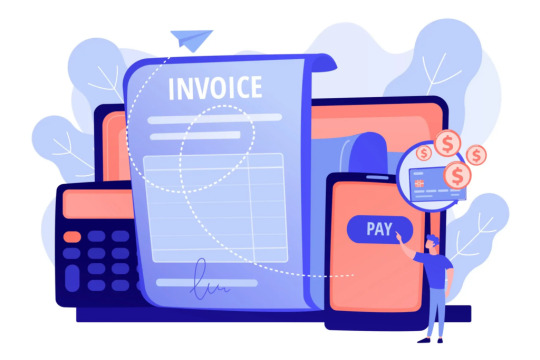
For companies aiming to grow and streamline their invoicing procedure, implementing an e-invoice software solution is the subsequent move. The appropriate software enables the immediate creation of e-invoices, guaranteeing that invoices are automatically saved and processed. Certain solutions allow for direct submission to government portals, removing the necessity for manual uploads. Bulk e-invoicing is another important function, allowing companies to create invoices for numerous transactions simultaneously. Targeted invoice processing guarantees that only pertinent invoices are handled, minimising redundancy and mistakes. Moreover, companies can generate e-invoices featuring embedded QR codes for authentication, guaranteeing adherence to regulatory standards. A unified e-invoice system also makes the cancellation process easier. If an error is found, companies can promptly file cancellation requests without added difficulties. Through e-invoice registers, companies can monitor transaction-specific statuses and keep structured records.
Enhancing your invoicing process
Embracing a systematic method for invoicing can assist companies in optimising their financial procedures. Here are a few suggestions to enhance your invoicing process: - Employ a uniform invoice format: Obtain a complimentary invoice template to ensure uniformity in all invoices. - Automate the creation of invoices: Select an e-invoice application that enables immediate e-invoice production to minimise manual effort. - Facilitate bulk invoicing: When dealing with numerous clients, choose bulk e-invoice creation to handle invoices effectively. - Guarantee adherence to regulations: Implement an e-invoice system that incorporates QR codes and IRN to fulfil legal obligations. - Effectively oversee and handle invoices: Use e-invoice reports to keep track of outstanding and created invoices in real time.
Final thoughts
e-Invoicing has changed how companies manage billing, providing efficiency, precision, and adherence to regulations. Whether you're beginning with a free invoice template or aiming to upgrade to a comprehensive e-invoice software, the shift is easier than ever. Utilising these tools allows companies to simplify their invoicing system, save time, and enhance financial management with ease. Read the full article
0 notes
Text
Fiber Internet: How It Compares to Other Internet Connections

In today's digital age, fast and reliable internet connectivity is essential for everything from work and education to entertainment and communication. As the demand for higher speeds and better performance continues to rise, various types of internet connections are available to meet these needs. One of the most notable options is fiber internet, known for its impressive speed and reliability. But how does it compare to other common internet connections, such as DSL, cable, and satellite? In this article, we’ll explore what makes fiber internet stand out and how it stacks up against other types of internet connections.
What is Fiber Internet?
Fiber optic internet, or fiber internet, uses light to transmit data through glass or plastic fiber strands. The technology relies on fiber-optic cables that are capable of carrying huge amounts of data over long distances with minimal loss in speed or quality. Fiber internet is known for offering some of the fastest speeds available, along with higher bandwidth, low latency, and reliability compared to other types of internet connections. There are two main types of fiber connections: - FTTH (Fiber to the Home): The fiber-optic cables run directly into your home or business, offering the best performance. - FTTC (Fiber to the Curb): Fiber cables run to a nearby street corner or utility pole, with the remaining distance covered by copper cables. While FTTC is faster than traditional DSL or cable, FTTH offers the best speeds and reliability.
Fiber Internet vs. DSL (Digital Subscriber Line)
DSL has been a popular internet option for many years, particularly in areas where high-speed internet options are limited. It uses telephone lines to transmit data, which makes it widely available but also limits its speed potential. Speed Comparison: - Fiber: Fiber optic internet speeds can reach up to 1 Gbps (Gigabit per second) or higher, with some providers offering even faster speeds, especially for businesses. Upload and download speeds are generally symmetrical, meaning the same speed for both. - DSL: Typical DSL speeds range from 1 to 100 Mbps (Megabits per second), depending on the provider and distance from the nearest telephone exchange. Upload speeds tend to be slower than download speeds. Why Fiber Wins: Fiber internet vastly outperforms DSL in terms of both speed and reliability. Fiber offers download and upload speeds that are far superior, especially for activities like video conferencing, online gaming, and streaming HD or 4K content. Fiber's low latency ensures minimal lag, making it ideal for real-time applications.
Fiber Internet vs. Cable Internet
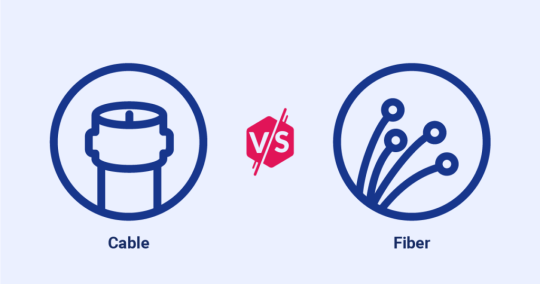
Cable internet is another widely used connection type that operates over coaxial cables, similar to the cables used for cable television. While cable internet offers faster speeds than DSL, it still faces limitations in terms of consistency and bandwidth. Speed Comparison: - Fiber: Fiber internet can offer speeds of up to 1 Gbps, with some providers even offering speeds of 2 Gbps or higher. - Cable: Cable internet speeds typically range from 25 Mbps to 1 Gbps, with speeds usually being faster than DSL but slower and less consistent than fiber. The speed can also vary depending on how many people are using the same network, especially during peak hours. Why Fiber Wins: While cable internet can offer relatively high speeds, it is often subject to network congestion. This means that during peak usage times (e.g., evenings when everyone in the neighborhood is online), your internet speed can slow down significantly. Fiber internet, on the other hand, offers greater bandwidth and is less susceptible to congestion, providing a more stable and consistent experience.
Fiber Internet vs. Satellite Internet
Satellite internet is commonly used in rural or remote areas where other forms of internet are not available. It works by transmitting data to and from satellites orbiting the Earth. While it provides a necessary service for some, it has its share of limitations. Speed Comparison: - Fiber: As mentioned, fiber internet speeds can reach up to 1 Gbps or higher, with low latency and high reliability. - Satellite: Satellite internet speeds typically range from 12 Mbps to 100 Mbps, but the speed can vary widely depending on the provider and location. Latency (the delay between sending and receiving data) is typically much higher than fiber, making it less ideal for activities like gaming or real-time communication. Why Fiber Wins: Fiber internet’s biggest advantage over satellite internet is speed and latency. While satellite internet may be the only option for those in remote areas, it is not a suitable choice for activities that require real-time interaction, such as video conferencing or online gaming. The latency in satellite internet is often too high to ensure smooth communication, while fiber internet provides almost instantaneous responses with minimal lag.
Fiber Internet vs. 5G Wireless

5G wireless internet is a newer technology that promises to deliver ultra-fast internet speeds using radio waves over a mobile network. While it holds great promise for future connectivity, its performance currently depends on proximity to 5G towers and the availability of compatible devices. Speed Comparison: - Fiber: Fiber can provide speeds up to 1 Gbps or more, with very low latency and high reliability. - 5G: Theoretical 5G speeds can reach up to 10 Gbps, but real-world speeds often range from 100 Mbps to 1 Gbps, depending on coverage and infrastructure. Why Fiber Wins: While 5G promises high speeds, fiber internet currently provides more reliable and consistent performance, especially in terms of latency and sustained speed. 5G’s performance can be impacted by factors such as distance from the tower, network congestion, and environmental obstructions like walls or buildings. Fiber, in contrast, provides dedicated, stable speeds, making it a better choice for tasks like remote work, streaming, and online gaming.
The Bottom Line: Why Fiber Internet is a Game Changer
Fiber internet offers unmatched speed, stability, and reliability compared to other types of internet connections. It’s the best choice for those who need fast, symmetrical speeds for high-demand tasks like streaming 4K video, running a business, or engaging in online gaming. Fiber’s low latency and resistance to congestion make it an ideal solution for homes and businesses that require a seamless, uninterrupted connection. Although fiber internet may not be available in all areas, its growing availability is paving the way for faster, more efficient internet access worldwide. As technology continues to evolve, fiber will likely remain at the forefront of internet connectivity, ensuring users enjoy the best speeds and performance for years to come. Read the full article
0 notes
Text
Why Managing Bot Traffic Is Pivotal To App Security

Over the last few years, bot activity on the internet has reached new heights, now accounting for over half of all internet traffic. Most of this bot traffic is harmless, and can even be beneficial, as in the case of search engine crawlers indexing your site, for example. However, a growing percentage of bot traffic is malicious, and it can negatively impact the performance and security of applications. Software teams must learn how to manage bot traffic effectively so their applications benefit from legitimate bot activity without compromising security and functionality. This article will discuss the main risks bots pose to applications, and the measures you can take to effectively manage bot traffic.
Types of bot threats to applications
A large volume of bot activity can impact an application in several ways. First, it can skew important metrics that technical or even marketing teams use to gather decision-making data and optimize the application. But there are also real cybersecurity risks associated with malicious bots. The most popular example is a distributed denial of service (DDoS) attack, where large botnets overwhelm the application with traffic, causing disruption or downtime. Another threat to consider is credential stuffing, where bots are used to automatically insert stolen usernames and passwords into login forms so real attackers can gain unauthorized access to user accounts. Bots can also be used by competitors to scrape proprietary data like pricing information, product details, or user reviews. So in a way, competitors are getting richer at the expense of your resources.
What if you don’t take any measures?
Managing application traffic is an essential component in ensuring a smooth experience for your users. Since bots account for a significant percentage of that traffic, it would be a mistake to leave them unmonitored. Doing so will put your application at an increased risk of a security incident or operational disruption, as you won’t know exactly whether the bot traffic you do have is malicious or not. The attacks that bots can execute, such as credential stuffing and DDoS can have real, long-term impact on your application and its user base, resulting in downtime, compromised user accounts, and ultimately, a loss of trust and interest from your customers. Simply monitoring bot traffic isn’t enough. That’s why we use the more proactive term “bot management.” It’s about controlling the type of bot traffic you allow, tolerate, or completely block from your application.
Strategies for managing bot traffic
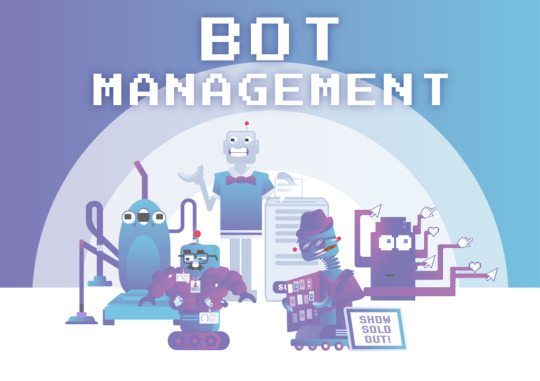
There are many ways you can approach managing bot activity within your application. First, there are the more traditional methods like CAPTCHA and rate limiting. CAPTCHA challenges app visitors with tests that are easy for humans but difficult for bots, and is still used in many applications. However, this approach negatively impacts user experience, and isn’t as effective as it once was, as bots become more advanced. Rate limiting is still an essential measure, allowing you control the number of requests a single IP can make within a given timeframe. This type of protection is very useful in case malicious bots attempt to brute force login credentials or overwhelm APIs. It’s important to have a general overview of all your application’s traffic and log activity so you can identify and respond to unusual spikes in traffic or an unnatural number of failed login attempts. This can be accomplished with a security and information event management (SIEM) system. Additionally, you could subscribe to a threat intelligence feed that will notify you when there is an uptick in botnet activity so you can implement new rules to block it before it affects your application.
Should you invest in a bot manager?

The growing concern of bot activity on the internet has also given birth to innovative solutions that are specifically tailored for managing bot traffic. These solutions can differentiate between the good bots (search engine crawlers or performance trackers) and the bad ones (credential stuffing bots, DDoS attackers and scrapers). The bot manager will provide you with all the capabilities mentioned above, all within a single, easy to use platform. Whether you decide to implement the capabilities yourself or use a bot manager depends on the level of protection your application requires, and the resources you have available. Managing bot traffic in-house gives you more control in theory, but using a specialized bot manager will likely prove to be a more efficient and reliable solution in practice. If you’re on the fence, most bot managers offer a free trial, so you can test it out before committing any further.
Conclusion
Bot activity has a real impact on applications. Whether most of the impact is positive or negative depends on how effectively you manage and mitigate malicious bot traffic. There are several approaches to managing bot traffic. If you want to prioritize user experience, you can refrain from implementing CAPTCHA, but you absolutely should apply alternative methods like rate limiting and traffic monitoring. Advanced bot protection solutions are also a worthy investment. Read the full article
0 notes
Text
Cost-Effective Ways to Promote Your Business Today

Effective promotion has become necessary in the modern competitive business environment irrespective of the size and budget of your company. This could be an early-stage entrepreneur or an established enterprise where you face challenges in searching for low-cost methods of marketing the products or services offered. This article looks at proven methods of promoting the business on any budget by maximizing your marketing efforts for less cost. From digital platforms to word-of-mouth, you will find actionable tactics to increase your brand visibility, attract more customers, and drive growth. With all these budget-friendly promotion methods, raise your business's profile and keep your marketing goals on point without going overboard in spending.
Cost-Effective Marketing Strategies for Small Businesses
Leverage Social Media Platforms
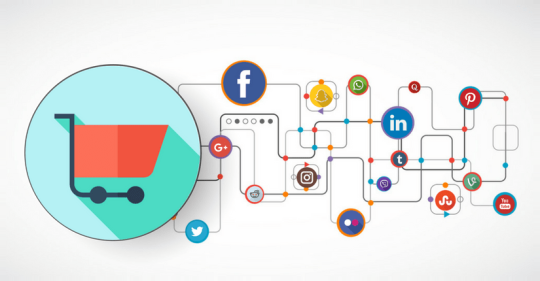
Social media is the best opportunity for small businesses in today's digital age, as they can reach out to the target audience at no or minimal cost. One can provide free business profiles on sites like Facebook, Instagram, and LinkedIn, where products or services can be showcased before a wider audience. Engage your audience by posting frequently, engaging with followers, and through hashtags. Think about using targeted ad campaigns on such platforms, which might be really cost-effective than traditional means of advertising. Implement Email Marketing Email marketing is one of the most efficient and cost-effective ways to promote your business. Build an email list of interested customers and send them regular updates, special offers, and valuable content. Use email marketing software to automate campaigns, segment your audience, and track engagement metrics. This strategy allows you to maintain a direct line of communication with your customers, fostering loyalty and driving repeat business. Optimize for Local SEO

Claiming and optimizing Google My Business listings will be important if targeting customers local to your business, along with ensuring that business information appears consistently across multiple directories online. Encourage positive reviews by satisfied customers to create additional credibility. Your opportunities of being picked up in search engines with more local SEO, increases your odds of appearing within search results for local results and subsequently increases the number of prospects in your locality.
Maximizing Your Promotional Budget with Innovative Tactics
Utilize Digital Platforms In this digital age, online platforms can be very cost-effective to promote your business. Leverage social media marketing and connect with your audience to create great content and establish brand awareness. Utilize search engine optimization to enhance the website's presence in search results, bringing potential customers organically. Collaborate and Network Form strategic partnerships with complementary businesses to cross-promote each other's products or services. Attend industry events, trade shows, and local business meetups to expand your network and create valuable connections. These relationships can lead to referrals, joint ventures, and increased exposure for your brand. Use Content Marketing Develop a content marketing strategy to showcase your expertise and provide value to your target audience. Create blog posts, videos, podcasts, or infographics that address your customers' pain points and offer solutions. This approach not only positions you as an industry authority but also drives organic traffic to your website, potentially converting visitors into loyal customers.
Telemarketing to Boost Outreach
Telemarketing continues to be a potent weapon for businesses that need expansion and leads. Properly executed, it can result in fantastic output even on the shoestring budget. To make your telemarketing pay well, consider investing in high-quality business lists for sale. These premium, compiled lists can give you relevant contact details so that you get more decision-makers. Making Your Pitch Before picking up the phone, develop a compelling script that highlights your unique value proposition. Keep it concise, engaging, and tailored to your audience's needs. Practice your delivery to sound natural and confident, as your tone can make or break the call. Measuring and Optimizing Track your key performance indicators in conversion rates, call duration, and follow-up appointments. Continuously use this data to hone in on your approach. Keep in mind that successful telemarketing is about creating a relationship rather than merely closing a sale. Focus on giving value and building trust with every single call to create sustainable business growth.
Conclusion
There is no need for an expensive campaign to advertise your business. By using a combination of low-cost and strategic paid methods, you can enhance your visibility and attract new customers. From leveraging the power of social media and content marketing to exploring targeted advertising and networking opportunities, there are many routes to take. Remember, consistency and authenticity are key in all your promotional efforts. As you implement such tactics, continue to analyze your results, prepared to make those important adjustments. With tenacity and creativity, you may achieve effective marketing of a business with any budget whatsoever while opening the door to sustainable growth and success in today's ever so competitive marketplace. Read the full article
0 notes
Text
Maximizing Efficiency with Comprehensive IT Lifecycle Management

Effective IT lifecycle management is crucial for any organization. Aligning IT lifecycle management with overall business operations is essential for cost optimization and improved workflows. HCL BigFix Lifecycle management platform helps enterprises to reduce the cost, risk and complexity of managing cloud, server lifecycle management, desktop, laptop, point-of-sale and other endpoints – all using a single, intelligent agent. HCL BigFix Lifecycle delivers the most comprehensive solution for managing all your IT assets with the broadest support for operating systems and devices, powered by the largest library of IT automation, combined with the most innovative vulnerability remediation risk reduction technologies on the market. Deployed in as little as a few hours, this industry-leading solution can shorten update cycles, speed endpoint provisioning, automate vulnerability remediation and prove reduced cyber risk, enhance IT and help-desk productivity, and boost end-user productivity. All in one solution, HCL BigFix Lifecycle.
Introduction
Technology has always been instrumental in the development of businesses, increased growth, and increased productivity levels. However, managing the IT assets' lifecycle can be very daunting due to the pace of technological change. IT lifecycle management is an important component forming a digital strategy for any business that helps organizations tame chaos and keep the IT assets in alignment with the business goals. Lifecycle management helps organizations optimize their IT infrastructure and reduce costs while delivering greater overall efficiencies. What is IT Lifecycle Management?
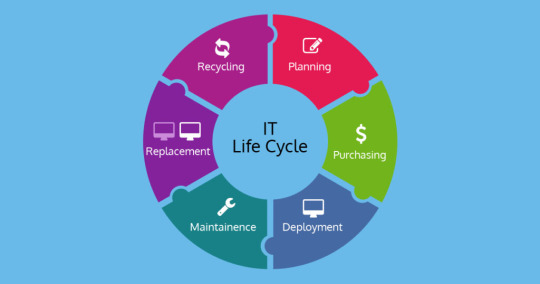
IT lifecycle management is the way of managing the entire lifecycle of IT assets, from procurement to disposal. This includes the stages of planning, procurement, implementation, operation, maintenance, and decommissioning covering the asset lifecycle. IT lifecycle management ensures organizations are able to maximize use and minimize total downtime and ownership cost through enhanced asset utilization as well as the successful compliance of regulatory requirements. This means helping in provisioning best asset value for the organization while supporting long-term business objectives through better IT asset management.
Key Features
- Discover and Inspect Device Lifecycle Management Dynamically Maintain real-time visibility into your entire endpoint landscape including cloud, virtual, on-premise and roaming devices, with an effective asset management system.Conducting a device inventory during the planning stage of device lifecycle management is crucial for ensuring devices are utilized efficiently and securely. Easily query endpoints to determine which policies are enforced and which applications and services are installed. - Patch Management

Deploy patches to distributed and virtual endpoints using Windows, UNIX, Linux and MacOS operating systems and third-party vendors, including Adobe, Mozilla, Apple, and Oracle. - Integrate Across the Enterprise Radically simplify IT and security operations by collecting, transforming and integrating your enterprise's endpoint visibility, security and operations data. - Server Automation Server automation helps manage physical, virtual and remote servers while lowering operational costs with real-time, policy-based management. Seamless physical and virtual server management from the same, single interface greatly improves visibility and control of all assets. HCL BigFix Lifecycle enables users to easily deploy and manage servers across heterogeneous platforms using either pre-built or custom automation. The automated task sequencing capability can be used for critical tasks like server builds (for example, deploying operating systems, configuring settings, deploying software, changing the hostname and restarting computer) or for other common system administrator tasks that require sequencing. - Fast Endpoint Query HCL BigFix Query provides real-time status of all your endpoints, enabling accurate identification and inspection of vulnerable devices. You can interrogate endpoints and get precise answers back in seconds, telling you which policies are enforced, and which applications and services are installed, and know how system configuration settings are set. It can even identify additional security threats. - Multicloud Support Cloud endpoints can be easily discovered and viewed alongside traditional endpoints using HCL BigFix. HCL BigFix Multicloud support allows organizations to deploy the HCL BigFix agent on cloud endpoints such as Microsoft Azure, Google Cloud and Amazon Web Services for complete visibility, control, and security. It allows organizations to seamlessly manage endpoints running in multiple cloud environments simultaneously. - Modern Client Management for Mobile Devices HCL BigFix Modern Client Management allows organizations the ability to manage both modern and legacy endpoints side-by-side using a single, enterprise endpoint management solution. Windows and macOS, along with mobile devices, are capable of being managed using either a traditional agent or Mobile Device Management (MDM) APIs. Leveraging both approaches together provides the greatest range of management and automation capabilities. - Analytics and reporting platform for Data Security Organizations need to quickly report their organization’s threat posture to executives and perform advanced analysis to drive next steps. Endpoints often serve as targets for hackers aiming to exploit business critical data, making it essential to secure such vital information. HCL BigFix Insights, included with HCL BigFix Lifecycle, provides a powerful endpoint data and integration platform and database for deeper data insights across all endpoints. HCL BigFix Insights leverages Business Intelligence (BI) reporting tools to provide out-of-the-box and customizable reports.
Conclusion
Effective IT Lifecycle Management is now essential in today's fast-paced digital environment. One unique solution that makes endpoint management easier in a variety of settings, such as on-premise, virtual, and cloud infrastructures, is HCL BigFix Lifecycle. With real-time insights, automated procedures, and strong security, BigFix gives IT teams the ability to manage anything from patch management and endpoint visibility to server and device lifecycle management. Organizations may increase operational effectiveness, lower cyber threats, and get more out of their IT expenditures by utilizing its sophisticated capabilities. With HCL BigFix Lifecycle, where innovation and smooth IT management collide, you can revolutionize your IT operations. Read the full article
0 notes
Text
Scaling Internationally with a Global Employer of Record (EoR): A Guide for Fast-Growing Companies

When a business begins scaling globally, opportunities abound—but so do the challenges. Hiring employees in foreign markets while navigating unfamiliar labor laws, tax requirements, and payroll systems can feel overwhelming. This is where a Global Employer of Record (EoR) becomes an indispensable partner. For fast-growing companies, leveraging the expertise of a Global EoR offers a streamlined way to tap into international talent without the complexities and costs of establishing legal entities in every country. In fact, 72% of companies expanding globally reported that compliance with local regulations is their biggest hurdle (PwC Global Workforce Study). With a Global EoR, businesses can sidestep these challenges while staying focused on their core goals. What Is a Global EoR and How Does It Work?

At its core, a Global EoR acts as the legal employer for your international workforce. While you retain day-to-day management of your team, the EoR handles all employer-related responsibilities, including payroll, taxes, benefits, and compliance with local labor laws. Think of a Global EoR as your international HR department, ensuring you can expand confidently across borders. Key Functions of a Global EoR: - Payroll and Tax Compliance: Ensures employees are paid accurately and on time while meeting all local tax regulations. - Employment Contracts: Drafts and maintains contracts that comply with local labor laws. - Benefits Administration: Provides statutory and supplementary benefits tailored to each country’s requirements. - Legal Compliance: Manages evolving labor laws to ensure your operations stay compliant. - Seamless Offboarding: Handles terminations and offboarding in compliance with local regulations. In today’s dynamic business landscape, the ability to scale quickly and compliantly is vital. By using a Global EoR, companies can enter new markets in a matter of weeks rather than months, accelerating growth and reducing administrative headaches. How Does a Global EoR Operate?

Global EoRs typically operate under two main models: 1. Partner-Dependent EoR This model involves outsourcing local HR and compliance tasks to third-party partners in each country. While this approach is often less expensive upfront, it comes with limitations: unpredictable costs, slower issue resolution, and reduced control over employee experience. 2. Owned-Entity EoR In this model, the EoR provider establishes its own legal entities in the countries where it operates. This offers businesses complete transparency and control over costs, faster onboarding processes, and a superior employee experience. Owned-entity EoRs are ideal for companies that prioritize reliability and scalability as they grow. Why Companies Choose a Global EoR A Global EoR offers distinct advantages, making it an invaluable resource for scaling businesses. 1. Faster Global Expansion Entering a new market traditionally requires setting up a legal entity—a process that can take up to six months or longer, depending on the country. A Global EoR can reduce this timeline to as little as two to four weeks, allowing businesses to quickly recruit top talent and begin operations. 2. Cost Savings Establishing a legal entity in a foreign country can cost $15,000 to $20,000 on average, excluding ongoing operational expenses. A Global EoR eliminates these upfront costs, providing a more cost-effective solution for companies expanding into multiple markets. 3. Simplified Compliance Navigating the intricacies of international labor laws is challenging, with 45% of global businesses citing compliance as a major roadblock (EY Global Payroll Survey). A Global EoR takes on this burden, ensuring your operations remain compliant and mitigating risks like fines or legal disputes. 4. Access to Global Talent Remote work has transformed hiring. A Global EoR enables companies to hire the best talent, regardless of location, while providing competitive benefits and ensuring compliance. This flexibility can help attract top performers and boost retention rates, even in competitive markets. When to Use a Global EoR Scaling businesses often encounter key moments where partnering with a Global EoR makes sense: 1. Exploring New Markets When entering a new market, a Global EoR lets you test the waters without the commitment of establishing a legal entity. This approach allows you to recruit local talent quickly, reach new customers, and start generating revenue with minimal upfront risk. 2. Attracting and Retaining Top Talent A Global EoR enables you to offer competitive compensation and benefits packages tailored to local markets. In regions where labor laws are highly complex, such as Europe or Asia, this can make a significant difference in attracting and retaining top performers. 3. Managing Remote Teams As remote work becomes more prevalent, a Global EoR ensures compliance and streamlined operations for distributed teams. According to Gartner, 51% of employees are working remotely part-time or full-time, emphasizing the need for global HR solutions. Conclusion: Unlocking Global Growth with EoR For scaling companies, a Global EoR is more than a service—it’s a strategic partner that simplifies international expansion and empowers businesses to focus on growth. By handling compliance, payroll, and HR responsibilities, a Global EoR allows you to scale faster, reduce costs, and attract top talent worldwide. Whether you’re exploring new markets, building distributed teams, or simply looking to streamline global operations, a Global EoR offers the tools and expertise to make it happen seamlessly. In today’s interconnected world, it’s not just about scaling—it’s about scaling smart. Read the full article
0 notes
Text
Essential Features to Look for in an AI App Builder for Your Business

Modern-day companies are increasingly turning to artificial intelligence (AI) solutions as part of their operations strategy to streamline processes, enhance customer interactions, and drive growth. Statistics suggest that on a global scale, 40% of companies across different sectors use AI for numerous business purposes. Custom AI applications can be an efficient solution for companies looking to provide customized digital experiences or streamline backend processes. Yet, choosing an AI app builder that best meets a business’ goals will be essential in realizing this objective. An effective platform should offer high-performance AI capabilities while being user-friendly and customizable to fit the unique requirements of your business. Read on to learn more about some useful features to look out for in an AI app builder so that your investment yields significant returns.

Pixabay
Customizable Solutions Aligning with Client Preferences
Before selecting an AI app builder, carefully evaluate its customization capabilities for your client or customer base. A quality AI app builder will enable you to tailor features according to specific audience members such as end-users or internal team members. Moreover, flexibility is also key so your app meets unique client expectations such as advanced analytics for app usage tracking. An app tailored to client-driven experiences allows businesses to better meet the challenges and expectations of its users. When choosing builders for custom client applications, prioritize modules or APIs that integrate smoothly with existing systems to ensure consistent data transitions and long-term reliability. Furthermore, choose an AI app builder with client customization features in mind for the ultimate tailored user experience that aligns with branding and functional goals.
Data Security and Privacy Features are Key Elements
As with any AI application, data security and privacy should always be at the forefront. AI applications handle large volumes of customer information that require protection. A trustworthy app builder should offer encryption features like secure API connections and data anonymization to safeguard user data and comply with relevant regulations, such as GDPR or CCPA in multiple regions where you serve customers. Ensuring data privacy helps build customer trust by encouraging them to feel more at ease when sharing sensitive data on a secure platform. In addition to traditional security measures, look for features that allow you to control data access within your organization; this ensures that only authorized personnel have access to sensitive information. Ultimately, by doing so, you reduce the odds of internal breaches.
Easy Integration With Existing Business Systems
Integrating capabilities is paramount when choosing an AI app builder, as this enables your new AI system to integrate smoothly into existing tools and software systems already in use. Most businesses rely on different systems for different functions, ranging from customer relationship management (CRM), enterprise resource planning (ERP) systems, marketing automation software, etc. The AI app builder you choose should be able to easily work alongside all these platforms while offering seamless data transfers between systems. Such an option allows for an improved user experience and increased data transfer speed. Customer-centric applications rely heavily on connecting to CRM platforms. An AI app that communicates with its CRM can personalize recommendations, create targeted marketing campaigns, or increase customer support services. When selecting an app builder, be sure to see if there are integration options with existing systems or custom APIs to facilitate compatibility. All in all, seamless integration will streamline implementation processes while improving overall functionality, allowing you to maximize return on your investment.
Scalability to Accommodate Future Expansion
Scalability should be of primary consideration when choosing an AI app builder to support the future growth of your business. As your organization expands, accommodating more users or adding features may become essential. So, selecting a platform specifically designed to upscale ensures you won't face restrictions as your needs evolve. Scalability refers to both technical abilities, like server capacity and processing power, as well as adaptability in accommodating advanced AI tools. A scalable AI app builder can accommodate changes, helping your company to expand seamlessly without disrupting user experience or performance.

Pixabay
The Bottom Line
Selecting an AI app builder for your business can have significant ramifications on its functionality, security, and scalability. By prioritizing features like client-centric customizations, strong data security protocols, user-friendly interfaces, and more, your chosen app-building tool can meet current needs while accommodating future growth. By doing so, you can rest easy knowing you provide lasting value for both internal team members and external customers. All things considered, leveraging the potential of AI-powered app-building tools grants you the upper hand in today’s cutthroat business world, encouraging sustained digital success in the competitive digitized ecosystem. Read the full article
0 notes
Text
How to Streamline Recruitment for Marketing Roles

Hiring for marketing positions can be challenging, especially with the growing demand for skilled professionals. Companies need candidates who are creative, adaptable, and able to handle the fast-paced nature of marketing. A smooth recruitment marketing strategy can save time, attract the right talent, and reduce frustration for everyone involved. This article provides simple steps to help businesses improve how they recruit for marketing roles.
Consider Professional Recruitment Agencies
Using a professional recruitment agency can make hiring easier. These agencies already have a network of qualified candidates and know what to look for in marketing professionals. If you’re hiring in Canada, Toronto marketing recruitment agencies can take care of the hard work, like screening resumes and checking references. They can also match you with people who have the exact skills you need, such as social media management or campaign planning. For example, instead of spending hours reviewing applications, you can rely on an agency to send you the best candidates, making the process faster and less stressful.
Provide a Clear Job Description

Unclear job descriptions often lead to confusion. When a company doesn’t explain the role well, it can attract the wrong applicants. To avoid this, create a detailed description of the job. List the responsibilities, skills, and tools the role requires. For example, if hiring a digital marketing specialist, include tasks like managing social media, running ad campaigns, and analyzing website traffic. Specify the tools they will use, such as Google Analytics or Mailchimp. A clear description ensures that only qualified candidates apply.
Make the Application Process Simple
A long or complicated application process can drive away strong candidates. Many people prefer straightforward steps when applying for jobs. Use online platforms that make it easy for candidates to submit their resumes and cover letters. Limit the number of forms or questions during the first stage. Using tools like applicant tracking systems (ATS) can help sort through resumes efficiently. These tools highlight candidates who meet the basic requirements, saving time for hiring teams.
Use Job Boards That Focus on Marketing

Posting on general job boards can result in a flood of irrelevant applications. To find better candidates, use job boards that focus on marketing and creative roles. Websites like MarketerHire or LinkedIn are excellent options. LinkedIn, for instance, allows businesses to search for candidates based on specific skills, such as SEO or content writing. This targeted approach ensures the job posting reaches people with the right expertise.
Focus on Skills Instead of Experience
While experience is important, skills often matter more in marketing. The industry evolves quickly, so someone with the ability to learn and adapt can often bring more value than someone with outdated experience. During the hiring process, assess skills like communication, creativity, and problem-solving. Practical tests can help evaluate these skills. For example, ask candidates to create a short marketing plan or suggest ideas for a social media campaign. These tasks show how they handle real-world challenges.
Encourage Employee Referrals
Employees can be a great source for finding talented candidates. Referral programs allow companies to tap into their team’s network. Referred candidates usually have some knowledge of the company culture, making the hiring process smoother. Provide clear instructions about the type of candidate needed. Offer rewards, such as bonuses, to motivate employees to refer people who are a good fit.
Use a Structured Interview Process
Interviews are one of the most critical steps in recruitment. However, unstructured interviews can make it hard to compare candidates fairly. A structured process helps ensure consistency. Prepare a list of standard questions for each candidate. Ask about their past projects, challenges they’ve faced, and how they approached problem-solving. Hypothetical scenarios, such as planning a product launch, can reveal their thinking and decision-making skills.
Offer Competitive Pay and Benefits
Marketing professionals have many opportunities available, so offering a fair salary and good benefits can attract top talent. Research industry standards to ensure your compensation is competitive. Include other perks, such as flexible schedules, professional development opportunities, or wellness programs. For example, offering training in advanced marketing tools or certifications can appeal to candidates who want to grow their skills.
Build a Strong Company Reputation
Candidates often research companies before applying. A good reputation makes a business more appealing. Highlight your workplace culture through social media posts, employee testimonials, and company achievements. For example, share stories about successful campaigns your marketing team has worked on or events they’ve organized. Candidates are more likely to apply when they feel a connection to your company’s values and accomplishments.
Use Data To Improve Recruitment
Analyzing recruitment data helps identify areas for improvement. If a large number of candidates abandon the application process, it could indicate that the process is too complex. Tracking metrics like time-to-hire can reveal bottlenecks in the hiring process. Tools like Google Analytics can show where candidates find your job postings. Adjusting your strategy based on this information ensures your recruitment process continues to attract the right talent.
Conclusion
Streamlining recruitment for marketing roles doesn’t have to be complicated. Start with a clear job description, simplify the application process, and use platforms that target marketing professionals. Focus on skills over experience, and consider employee referrals to find top talent. Offering competitive pay and building a strong company reputation can also make a difference. When recruitment is efficient, companies can save time and attract the right people to help their marketing efforts succeed. Read the full article
0 notes
Text
How Account-Based Marketing Drives B2B Success

Account-Based Marketing (AB can be an important game changer for B2B organizations, helping to achieve results by focusing on high-value accounts by delivering targeted campaigns. With a thorough understanding of the distinct requirements, issues and process of decision-making for every account, companies can customize the marketing and sales strategies to create strong connections and boost conversion. This approach is designed to warrant that marketing efforts don't go to non-qualified leads, increasing the effectiveness and efficiency of your marketing. The impact of ABM on B2B performance is substantial. It improves engagement and relevancy and strengthens connections with important people in the decision-making process, and helps close more sales. Through providing relevant material and coordinating marketing strategies and sales tactics, ABM helps businesses stand apart, establish trust and increase revenue. What is Account-Based Marketing? Account-Based Marketing makes sure that marketing efforts don't waste time on non-qualified leads, which improves the effectiveness and efficiency of your marketing. ABM's individualized approach allows businesses to make a mark, establish trust and boost the growth of revenue by offering highly relevant material that is a hit with the key people. Through the alignment of marketing and sales tactics, ABM enables companies to achieve more sales, increase customer satisfaction and create long-term relationships with the most important customers. The Benefits of Account-Based Marketing 1. Higher ROI

One of the biggest benefits in Account-Based Marketing (ABM) is the potential for providing a greater ROI (ROI). By focusing the resources of high-value accounts firms are able to actually achieve greater payoff using fewer resources. According to several studies firms that employ ABM generally see greater ROI than traditional marketing techniques. 2. Enhanced Customer Experience ABM allows businesses to focus on providing a more personal and relevant experience for the accounts they want to target. By analyzing the particular requirements and issues of every account, marketers can modify their messages and content to be highly resonant with their customers. This customized approach not only enhances engagement but also helps build better relationships and trust with prospective customers. 3. Improved Alignment Between Marketing and Sales ABM encourages more co-operation among marketing and sales personnel. Since both teams concentrate on the same group of high-value customers and can collaborate to create and implement strategies to increase involvement and ultimately conversion. This ensures that marketing efforts directly contribute to sales objectives and the reverse is true. 4. Shortened Sales Cycle By focusing on accounts with the highest likelihood of conversion as well as providing bespoke content or solutions ABM will help to reduce the time to sell. Prospects are provided with the necessary information at every stage of purchasing, thus reducing the time it takes to nurture leads and speeding up the path to purchasing. 5. Better Measurement and Insights ABM lets for greater precision in measuring marketing effectiveness. By focusing on a narrower group of targeted accounts business can measure the engagement and conversion rates more precisely. This approach based on data provides important insight into how strategies are effective and what improvement is needed. Implementing Account-Based Marketing: A Step-by-Step Guide 1. Identify High-Value Accounts - Investigating Potential Accounts: Utilize analysis and data to discover companies that fit the ideal profile of your customer (ICP). Be aware of factors like size and revenue, industry size and the way they fit with your service or product. - Engagement of Sales Team Members: Work together with the sales staff in order to gather information about the accounts they believe have the most chance for success. - Prioritizing Accounts: Classify the accounts you have identified based on their strategic importance and the potential impact on your company's goals. 2. Develop Personalized Campaigns - Making Account Profiles: Create complete profiles for each account you want to target with key decision makers along with pain points and business goals. - Customizing content: as well as Messaging Design personal content and messages that address the specific demands and problems of every account. This can be in the form of customized emails, whitepapers, case studies, whitepapers and other things. - Multiple channels: Use multiple channels to connect with your targeted accounts, such as email as well as webinars, social media and direct mail. 3. Align Marketing and Sales Efforts - Establish Common Goals: Set goals and common metrics for teams from both marketing as well as sales departments to strive towards. - Develop integrated strategies: Create combined marketing plans for selling and marketing. These strategies describe how each team collaborates to reach out and convert potential customers. - Regular Communication: Schedule regularly scheduled meetings as well as check-ins for discussion of the progress made, share information and make adjustments to strategies if needed. 4. Execute and Monitor Campaigns - Launch Campaigns: Launch your customized campaigns on the channels you have chosen, making sure that the content and messages are aligned to the requirements of the accounts you want to target. - Analyze Engagement: Utilize analytics tools to measure engagement metrics such as open rates for emails, content downloads, website visits, as well as the social-media interactions. - Assess Success: Keep track of important indicators of performance (KPIs) like the level of engagement with your account rate, conversion rates, and the revenue generated by account targets. 5. Refine and Optimize - Analyze Results: Examine how effective your campaign is and determine points for improvement. - Modify Strategies: Make changes to content or messaging channels based on the information that you have gathered from your research. - Scale successful tactics: Find the most effective tactics and then scale them across multiple accounts to maximize outcome. leading Practices for Account-Based Marketing Success - Leverage Technology

Make use of the latest marketing equipment and technology to aid your ABM initiatives. Solutions like customer relation management (CRM) software, marketing automation platforms, and analytics tools can improve the processes you use and offer additional important information. - Focus on Quality and Not Quantity ABM is all about focusing on only a small number of accounts with high value rather than casting a large web. attention to the high-quality of your interaction with these accounts, and ensure the efforts you make are personalized and pertinent. - Foster Collaboration Promote a sense of cooperation that is shared between marketing team members and the sales department. Regular communications, shared goals as well as integrated plans are crucial for ensuring that each team works definitely to achieve ABM success. - Measure and Iterate Monitor the success of your ABM initiatives and be prepared to tweak and improve your strategies. Make use of data-driven insight to make educated decisions as well as boost your campaigns in the course of time. - Educate and Empower Your Teams Make sure the marketing and sales teams are aware of ABM fundamentals in addition to accurate practices. Offer training and resources to enable your teams to implement ABM tactics efficiently. Conclusion Account-Based Marketing (ABM) is an effective Strategy that can result in huge results for B2B companies. Focusing on accounts with high value and delivering personalized experiences and encouraging collaboration between marketing team members and the sales department, ABM assists businesses complete greater ROI, shorter sales cycles, as well as better relationships with customers. To begin using ABM and discover how it can improve your B2B marketing initiatives, get Get Started with Lusha for all the resources and information you require. FAQs 1. What is the main difference between ABM or traditional marketing? The most significant distinction in ABM and traditional Marketing (ABM) as opposed to traditional marketing is the purpose. ABM concentrates on high-value clients through targeted campaigns, while traditional marketing uses a wider reach to reach a wider public. For instance, ABM might involve creating an individualized content piece for an individual prospect of high value while traditional marketing will distribute a generic White Paper that would be distributed to the thousands of prospects. 2. How do you find high-value accounts for ABM? Identifying high-value customers is about identifying accounts that may match what you consider to be your perfect customer profile (ICP) . Engaging with sales representatives to collect data, and deciding on the best accounts according to their strategic significance and potential impact on the business goals. Tools such as CRM systems and data analytics can assist with this. For example software companies could determine large corporations within the finance industry as high-value accounts because of their potential for large-scale long-term contracts. 3. What role can technology play in ABM? Technology plays a key part for ABM through streamlining the processes providing important insights and enabling a more personalized engagement. CRM software assists in managing accounts and data, marketing automation platforms facilitate personalized outreach and analytics tools monitor the performance and engagement metrics. For instance, a CRM system permits an ABM team to monitor the entire communication process and customize follow-ups for particular accounts. 5. How can marketing and sales team collaborate in ABM strategy? With An ABM approach, marketing and sales teams are in close collaboration, making common goals, creating integrated strategies and maintaining regular communications. This assures that marketing initiatives directly contribute to sales objectives and that both teams work to reach out and convert accounts. For example, marketing might create tailored content which sales can use for targeted outreach to assure consistency and relevancy in messages. Read the full article
0 notes
Link
0 notes
Link
0 notes
Text
Look at Best Practices for Fire Safety in Large-Scale Warehousing Businesses

Ensuring fire safety in large-scale warehouses is crucial because of the massive inventory and intricate layouts. With so much costly material on hand, just one fire can cause substantial harm. Effective fire safety procedures are critical for safeguarding assets and staff members. The NFPA reports that almost 1,450 warehouse fires are responded to by American fire departments annually. These fires lead to around $283 million in property damage annually, along with two civilian deaths and 16 injuries. Electrical distribution and lighting equipment are common culprits, causing 18 percent of these fires. A well-rounded approach includes installing advanced fire prevention systems and conducting regular safety drills. Businesses that concentrate on these areas can reduce the likelihood of interruptions caused by fire. All things considered, keeping a safe and effective warehouse environment requires a comprehensive fire safety plan.
Installing Fire Detection and Suppression Systems

A reliable fire detection system is the backbone of any effective fire safety plan. In large-scale warehouses, integrating advanced fire alarms, smoke detectors, and heat sensors can provide early warning signs and enable quick response. Supplement these systems with automated fire suppression technologies like sprinklers and clean agent systems, which are crucial for minimizing damage. Zion Market Research notes that North America is expected to see the fastest growth in the global fire alarm system market. In the US, about two-thirds of properties have some type of fire alarm installed. Strict regulations and guidelines help enforce fire safety across residential, commercial, and industrial sectors. These systems are kept functional and responsive by routine testing and maintenance. Further, improve general safety and readiness by making sure that staff members receive regular fire drill training and are instructed on fire response protocols.
The Case Against AFFF: Exploring Safer Alternatives
Because aqueous film-forming foam (AFFF) is so good at putting out flammable liquid fires, it is often used in a variety of industries. Concerns about its environmental effect and potential health dangers have prompted further examination. Per- and polyfluoroalkyl compounds (PFAS), found in AFFF, have been connected to many health problems as well as environmental damage. According to TruLaw, those who have suffered from exposure to AFFF and its chemicals have filed numerous lawsuits seeking compensation. These legal actions often highlight the long-term health risks and environmental damage associated with AFFF use. As a result, many companies are being held accountable for the harmful effects of their fire suppression practices, prompting a shift toward safer alternatives. ConsumerNotice.org highlights that manufacturers like DuPont and 3M are among those named in the lawsuits. The litigation is also revealing differing opinions on who should be held accountable for AFFF and PFAS usage. Some claims in the AFFF lawsuit suggest that NFPA testing may have required these chemicals to meet standards for firefighter equipment. Therefore, warehousing businesses should consider alternative fire suppression systems that are effective yet environmentally friendly. Options such as clean agents, foam concentrates without PFAS, and water mist systems offer safer, more sustainable solutions for fire safety.
Developing a Comprehensive Fire Safety Plan

Developing a complete fire safety strategy involves more than simply installing safety devices. It calls for a systematic approach to risk management and emergency response. Begin by doing a detailed risk assessment to determine possible fire dangers and weaknesses in the warehouse layout. As per EHS Daily Advisor, OSHA’s exit routes and emergency planning regulations, established on May 12, 1971, are among its oldest standards. These rules are outlined in 29 CFR 1910 Subpart E. OSHA strictly enforces sections 1910.36 and 1910.37 to ensure compliance with exit routes and emergency planning. Develop detailed evacuation plans, clearly marked exits, and emergency assembly points to guide employees in case of a fire. Regularly review and update these plans to address any changes in the warehouse environment or operational procedures. Additionally, ensure that all employees are trained on fire safety protocols and that the plan is practiced through frequent drills and reviews.
FAQs
What is the working principle of a fire detector? Fire detectors work by sensing changes in the environment that indicate a fire. Smoke detectors detect particles from combustion, while heat detectors sense rapid temperature increases. Some systems combine multiple sensors to improve accuracy, providing early warnings to prevent fire damage and enhance safety. What are the symptoms of AFFF exposure? Symptoms of AFFF exposure may include skin irritation, respiratory issues, and gastrointestinal problems. Long-term exposure can lead to more serious health concerns, such as liver damage, kidney problems, and increased risk of certain cancers. Regular monitoring and medical evaluation are advised for those exposed to AFFF. How do you develop a fire safety plan? To create a fire safety plan, start by identifying potential fire hazards and assessing risks in your environment. Develop clear evacuation routes and procedures, and ensure all employees are trained on these protocols. Regularly review and update the plan, and conduct drills to maintain preparedness. While advanced fire suppression systems are essential, fire safety in large warehouses requires a holistic approach. Regular maintenance of equipment, thorough employee training, and adopting safer alternatives, such as PFAS-free foams, are all critical components. But it's not just about the technology, developing a comprehensive fire safety plan is crucial. This plan should include detailed risk assessments, clear evacuation procedures, and frequent drills. With this, you empower employees to act swiftly in emergencies, protect valuable inventory, and cultivate a proactive fire prevention culture within the warehouse. This all-encompassing strategy helps ensure safety and minimize the impact of potential fires. Read the full article
0 notes
Text
How Low-Code And Citizen Development Simplify App Development

Modern, innovative enterprises depend on applications and customized tech solutions to deliver a customer experience and drive business revenue. For instance, a recent study found that businesses using agile app development approaches report 30% faster project delivery times. However, many enterprises are unable to address niche pain points because they’re overwhelmed with IT challenges. Keeping up with a rapidly evolving technology atmosphere is expensive and associated with lagging. Legacy technology affects customer experiences, slows down your organization, and opens you up to security risks. So, how can your business keep moving forward with a shortage of skilled software developers? The solution is low-code citizen app development. A low-code application platform, is a business model that allows professional and nonprofessional developers, including business users, to build and customize software apps with no or minimal coding techniques. A survey by Gartner1 stated that organizations will build 70 percent of their new applications using low-code or no-code platforms by 2025. It helps growth-oriented organizations to achieve goals, increase market share, and gain a competitive edge. This blog will explore low-code app development and citizen developers more. Let’s dive deeper into how these platforms can revolutionize your app development process.
What is Low-Code Development?

Low-code development is an advanced paradigm of application development that reduces the levels of hand coding involved. It eliminates the need to write complex codes as a user just has to employ a simple interface that is, dragging and dropping in the environment to build applications. It opens up application development to even those who have never coded before and also professional coders without any regard to their level of proficiency in technology. Low-code development platforms (LCDPs) which are also known as quick application development tools (QADTs) allow users to employ a graphical user interface to create applications and services, simplifying and automating each stage in the life of the application. This approach speeds up the development cycle, encourages creativity, and allows non-exclusionary participation in the development of business applications. In many cases, low code development allows organizations to keep pace with the rising market demand and spearhead their digital transformation efforts.
The Rise of Citizen Development

One of the major developments in the low-code development space is the unprecedented rise of citizen development. Citizen development can be defined as a non-teaching audience also called as citizen developers creating apps and solutions with no or limited coding. Low Code platforms have enabled, without a fuss, to citizen developers, through visual development tools as well as drag and drop interfaces, the making of applications. This has opened up the development field to the business users who were previously seen as passive participants in their digital transformation projects. Therefore, such transformation can be made by organizations much more quickly, they enhance efficiency, and cut down the workload on the IT departments.
How Do Low-Code and Citizen Development Make App Development More Accessible?
The demand for business applications is growing faster than organizations' capacity to deliver them. To stay afloat, businesses are seeking a low-code development platform. These apps are built outside the IT department, with half created by employees with little to no technical skills, reducing the barriers to citizen developers entering software development. Low-code and citizen development reduce the barriers to entry in app development by offering citizen developers to create application software using visual tools and model-driven processes. Instead of traditional code-based programming, developers use a unified development platform’s pre-built components and drag-and-drop interfaces to build apps. For example, a mid-sized retail company used a low-code platform to create an inventory management app in just a few weeks, a task that would have taken months with traditional development. With such a framework, even a user fluent in evolving business needs without coding knowledge can participate in the development required. With lots of pre-built templates, developers can build and deliver low-code apps easily.
What Benefits Do Low-Code and Citizen Development Offer?
Development tools that derive their benefits from a low layer of abstraction are built to create solutions with little or no programming knowledge. Just like the way a toddler begins by segregating colored blocks, professionals, who have some basic understanding of programming, would use low code development platforms to bring their prototypes to life. They provide the following advantages to the developers: - Efficiency: A low-code application platform provides the efficiency and agility necessary to modernize and accelerate app development. It offers comprehensive services and no backend complexity.For instance, companies using low-code have reported a 50% reduction in time spent on app development. - Single code base: Enterprise low codeI offers a single code base for building apps, from progressive web apps (PWAs) to native mobile apps. It allows businesses to reach users wherever they live digitally across any device, even wearables and kiosks. - No coding required: Basic coding knowledge is sufficient for anyone to build apps. - Security: Low-code apps are easy to maintain and debug. They also easily handle app security, maintenance, and upgrades. Their easy development methods help you respond to changing opportunities and regulatory/compliance issues. - Cost- Efficient: It’s cost-effective. By reducing reliance on expensive IT resources, leveraging prebuilt templates, and supporting multi-platform development, it lowers overall development costs.
How do low-code platforms with drag and drop interface facilitate app development for citizen developers?
Low-code application platforms are designed with both business users and professional developers in mind, making it possible to build applications without the need for extensive development or coding experience. These platforms offer self-service apps with existing, pre-built modules and elements. It allows citizen developers to create a working app click workflow. With drag-and-drop interfaces for function integration and built-in testing and debugging tools, identifying and fixing issues becomes a breeze. By leaving the coding portion to the platform, developers can offer businesses the ability to build their software solutions, automate repetitive tasks, improve operational efficiency, and achieve great ROI. Additionally, Citizen developers can also handle variable workloads, such as adding more users to the apps as the organization grows, as these platforms offer scalability and agility. These platforms easily comply with security regulations and handle app security, maintenance, and upgrades. This flexibility is crucial for organizations facing fluctuating demands.
Conclusion
Low-code application platforms benefit from multi-device interoperability and allow citizen developers to build apps that adapt to all primary devices and platforms. Enterprise low code can be utilized on any device running key business processes. By mapping their requirements to product functions, customers receive the best possible experience. Are you looking for a low-app development platform to meet your business needs? Build apps with HCL Volt MX and build innovative experiences for your customers, partners, and employees. It boosts productivity and developer experience through our AI-powered developer assistant and creates EX and remote work apps through simplified citizen development. Contact us today to explore how HCL Volt MX can empower your organization! Read the full article
0 notes
Text
The Role of Rebate Management Software in Enhancing Supplier Relationships

Effective supplier relationships are critical for the success of any business. They ensure a steady flow of products and services, help negotiate favorable terms, and create opportunities for strategic partnerships. One key aspect that can strengthen these relationships is the effective management of rebates. Rebate programs, when handled well, can incentivize better performance from suppliers and lead to mutual financial gains. However, managing rebates manually can be complex, error-prone, and time-consuming. This is where rebate management software comes in, revolutionizing how businesses manage rebates and ultimately enhancing their relationships with suppliers.
Increased Transparency and Trust

Transparency is a foundational element of strong supplier relationships, and rebate management software brings clarity to the rebate process. Manual rebate tracking often leads to discrepancies, delays, or disputes, which can erode trust between parties. On the other hand, rebate management software automates and streamlines the process, ensuring that both suppliers and businesses have access to accurate, real-time data. With rebate management software, suppliers can easily see how their performance aligns with rebate targets, clearly understanding what they need to achieve to qualify for incentives. This visibility fosters trust, as both parties can rely on the same transparent data to avoid misunderstandings or disagreements. As a result, suppliers are more likely to view the business as a reliable partner, strengthening the overall relationship.
Improved Collaboration and Communication
Rebate management software facilitates better communication and collaboration between businesses and their suppliers. By centralizing all rebate-related data and making it accessible to both parties, the software ensures that everyone is on the same page. Suppliers and businesses can work together to monitor rebate performance, adjust targets if necessary, and strategize for future growth. This collaborative approach leads to more meaningful interactions between businesses and suppliers. Rather than focusing on resolving disputes or untangling confusing rebate structures, both sides can concentrate on how to optimize the partnership. The ability to share real-time data and make informed decisions enhances communication, driving a more productive and positive relationship.
Automation Reduces Errors and Increases Efficiency
One of the main reasons rebate management can strain supplier relationships is the potential for human error. Manual calculations and data entry are prone to mistakes, which can lead to payment delays, miscalculations, or even financial losses. These errors can create tension and frustration for suppliers who expect timely and accurate rebate payments. Rebate management software automates rebate calculations and tracking, significantly reducing the risk of errors. This automation also streamlines the entire rebate process, from setting up agreements to managing payments. As a result, suppliers receive their rebates more efficiently, and businesses spend less time managing administrative tasks. The increased accuracy and efficiency lead to a smoother rebate experience, reinforcing supplier confidence and improving long-term relationships.
Data-Driven Insights for Strategic Growth

Rebate management software provides businesses and suppliers with valuable insights into performance metrics. By analyzing data from rebate programs, businesses can identify patterns, optimize rebate structures, and develop strategies that benefit both parties. These insights allow businesses to fine-tune their rebate offerings to incentivize suppliers effectively, while suppliers can adjust their operations to meet performance targets more easily. This data-driven approach empowers businesses to structure rebate programs that drive better results and create win-win scenarios for both sides. Suppliers appreciate the clear goals and fair incentives, and businesses benefit from improved supplier performance and stronger partnerships.
Conclusion
Rebate management software plays a vital role in enhancing supplier relationships by increasing transparency, improving collaboration, reducing errors, and providing valuable insights. Businesses can foster trust, drive supplier performance, and strengthen their partnerships by automating and streamlining the rebate process. As supplier relationships continue to be a key driver of business success, adopting rebate management software is a strategic move that benefits both businesses and their suppliers. Read the full article
0 notes
Text
Choosing the Right Gantt Chart Widget for Your Project Management Software

JavaScript Gantt widgets have become a vital component in modern project management software, offering developers and businesses the tools needed to visualize, manage, and track complex projects effectively. These widgets simplify project management by allowing teams to create detailed timelines, set task dependencies, and allocate resources with precision. With the rise of JavaScript in web development, Gantt widgets have evolved to provide seamless integration, real-time updates, and enhanced collaboration features. This article will explore the role of Gantt charts in project management software, the benefits of using JavaScript Gantt widgets for developers, and key criteria for choosing the right Gantt solution for your project.
Role of Gantt Charts in Project Management Software
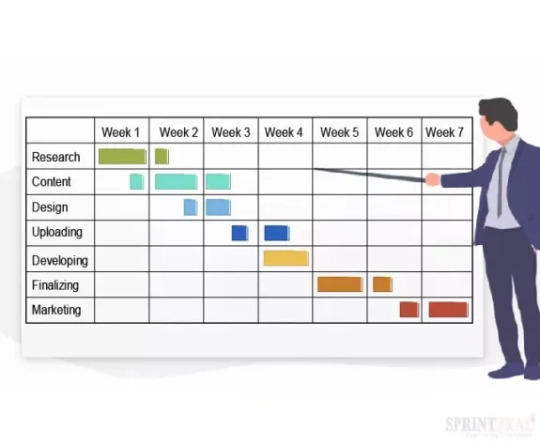
Gantt charts are essential tools in project management software, offering a clear, visual timeline of tasks, milestones, and deadlines. By illustrating task sequences and dependencies, they allow teams to understand the flow of work, identifying which tasks are critical to completing the project on time. This visual clarity simplifies the management of complex projects by breaking them down into manageable stages, enabling project managers to assign tasks efficiently. In addition to enhancing task management, Gantt charts improve team collaboration. With real-time updates and a shared view of the project's progress, team members can stay aligned on their responsibilities and deadlines. This transparency helps reduce miscommunication and ensures that everyone is aware of their contribution to the overall project. Furthermore, Gantt charts are invaluable for tracking progress. They allow managers to monitor task completion and quickly identify potential bottlenecks, helping to adjust workloads and resources as needed to keep the project on track. By making it easier to meet deadlines and manage resources, Gantt charts ensure that projects are delivered on time and within scope, improving overall efficiency in project management.
How JavaScript Gantt Widgets Simplify the Life of Developers
A proper JS Gantt chart widget greatly simplifies the life of developers by providing pre-built, customizable components that streamline the integration of project management features into web applications. These widgets come with a wide range of functionalities, such as task scheduling, dependencies, and resource management, eliminating the need for developers to build these features from scratch. Additionally, the flexibility of JavaScript allows for seamless customization, meaning developers can adapt the Gantt widget to meet specific project needs without diving into complex coding. With features like real-time updates and collaboration tools, JavaScript Gantt widgets enable developers to focus on core business logic while ensuring the project management interface remains user-friendly and efficient. Furthermore, these widgets are often optimized for performance, making it easier for developers to handle large datasets and complex project structures without slowing down the application. Integration with other technologies, such as REST APIs or third-party libraries, is also simplified, allowing developers to connect the Gantt chart with existing systems effortlessly. The broad support for frameworks like React, Angular, and Vue ensures that JavaScript Gantt widgets can be embedded in various development environments, making them highly adaptable and time-saving.
Challenges of Choosing the Right Gantt and Key Criteria to Bear in Mind
Choosing the right Gantt chart widget for your project management software can be a challenging decision, especially when several factors come into play. Here are some of the key criteria to consider when looking for such JavaScript project management tools:

- Project Complexity: The first factor to evaluate is the complexity of your projects. For simple projects, a Gantt chart with basic features like task scheduling and dependency tracking might be enough. However, for more complex projects with multiple tasks, dependencies, and resources, you’ll need a more advanced Gantt widget that can handle intricate project structures and large datasets. The widget should support resource allocation, critical path analysis, and perhaps even advanced features like project baselines or risk management. - Budget Considerations: Your budget will also play a significant role in choosing the right Gantt chart widget. Some widgets offer a wide range of features but can be costly, while others may be more affordable yet still provide the necessary functionalities. Keep in mind that while free or low-cost options might suit smaller projects, investing in a robust, scalable Gantt chart widget can save time and money in the long run, especially when managing larger projects. - Technical Skills: Consider the technical expertise of your development team. Some Gantt chart widgets offer more flexibility and customization options, but they may require advanced coding skills or familiarity with specific frameworks (like React or Angular). If your team is not well-versed in these technologies, it may be better to opt for a more user-friendly solution that offers built-in features with less need for complex customization. - Community Support and Documentation: A well-documented widget with strong community support can be invaluable during development. Look for Gantt chart widgets that have thorough, easy-to-understand documentation, along with an active community or forum where you can seek advice, share knowledge, and troubleshoot issues. A strong support system can speed up development time and ensure that any issues you encounter can be quickly resolved. Considering these criteria will help you find a Gantt chart widget that not only fits the technical needs of your project but also aligns with your budget, team capabilities, and future scalability.
Conclusion
In conclusion, choosing the right Gantt chart widget is pivotal to ensuring the success of your project management software. By carefully evaluating factors such as project complexity, budget, technical expertise, and community support, you can select a solution that best fits your team’s needs. JavaScript Gantt widgets offer a powerful tool for simplifying the development process and enhancing project management capabilities, enabling teams to visualize timelines, manage resources, and track dependencies with ease. Ultimately, the right widget not only streamlines workflow but also empowers teams to deliver projects on time and within scope, driving overall productivity and project success. Whether you’re building a new application or enhancing an existing one, investing in a robust Gantt chart widget can make all the difference in achieving your project goals. Read the full article
0 notes
Text
Why Do Occupational Injuries and Mental Health Form Complex Bond

In recent years, workplace mental health has gained significant attention, as its influence on both individual and organizational success becomes increasingly apparent. Occupational health researchers have been at the forefront of uncovering the root causes and effects of mental health issues in professional settings. A particularly important yet frequently overlooked area of study is the two-way connection between mental health struggles and workplace injuries. This relationship is complex, as poor mental health can heighten the risk of on-the-job accidents. On the other hand, work-related injuries can trigger or worsen mental health problems. By focusing on these two directional links, researchers aim to highlight a critical factor that undermines the long-term well-being of an organization, its workforce. Understanding this interplay is crucial for developing comprehensive strategies to promote both physical and mental health in the workplace. In this article, let us understand this relationship of mind and body which impacts the well-being of a company's workforce.
Meta-Analysis Report
The link between work injuries and mental health has been studied inconsistently across various fields, with limited interdisciplinary communication. However, a recent comprehensive meta-analysis has changed this scenario. This study encompasses over 1.4 million participants from 147 global studies conducted since 1988. It underscores the need for integrated approaches to address both physical and psychological well-being in the workplace. The meta-analysis, which systematically collates and synthesizes existing quantitative research, provides a clearer understanding of the current knowledge base. Its findings reveal that the relationship between work injuries and mental health is bidirectional but asymmetrical. A stronger correlation exists when work injuries precede mental health challenges. Meanwhile, a smaller but significant association is observed when mental health issues occur first. This interplay between mental health issues and workplace injuries imposes substantial burdens on organizations, society, and individuals. These challenges not only lead to financial loss but also cause immense distress for those affected and their families.
Psychological Impact
Work injuries often lead to a primary focus on physical recovery, but the psychological impact is equally crucial. The sudden disruption caused by workplace accidents can trigger stress, anxiety, and depression. This psychological distress may stem from pain, stigma, and concerns about future employment prospects. Research indicates that negative thought patterns, like rumination, frequently follow work injuries and contribute significantly to mental health challenges. These thoughts can create a mental trap, hindering recovery. In such cases, consulting a personal injury lawyer may provide clarity on legal options and potential compensation. Interestingly, the relationship works both ways. Mental health challenges are associated with an increased likelihood of sustaining work injuries. People who are distressed frequently have worse cognitive performance, are more easily distracted, and have trouble making decisions. This makes job duties more challenging and potentially hazardous. For instance, an employee battling severe depression might struggle to concentrate, increasing the risk of overlooking hazards or misjudging dangerous situations. As per TorHoerman Law, a person is eligible to claim non-economic damages like emotional distress caused due to personal injury.
What Should Be Done?

Understanding the underlying mechanisms, such as negative thought patterns and perceived job demands for organizations is important. By doing that, employers can design targeted interventions that address the root causes of these issues. This approach allows for more precise and effective strategies to promote worker’s well-being. Furthermore, examining factors that influence the connection between work injuries and mental health provides valuable insights for developing tailored strategies. These factors include injury severity and frequency, types of mental health challenges that may arise, and identification of particularly vulnerable groups. Integrating physical and psychological care ensures that both aspects receive equal attention in promoting human sustainability. This holistic approach can significantly enhance the quality of life for workers across all industries. By implementing comprehensive workplace wellness programs that address both physical safety and mental health, organizations can create more productive work environments. This approach not only benefits individual workers but also contributes to the overall success and sustainability of businesses and industries.
Frequently Asked Questions (FAQs)
How can employers support employees with psychological impacts from workplace injuries? Employers can provide access to counseling services, create a supportive work environment, offer flexible work arrangements, and promote open communication channels to help employees cope with psychological impacts. What are the long-term effects of untreated workplace injuries, both physically and psychologically? Untreated workplace injuries can lead to reduced mobility, chronic pain, decreased quality of life, and long-term psychological issues such as PTSD, depression, and anxiety. These effects can impact both the individual's personal and professional life. Can workplace injuries cause financial strain on employees? Yes, workplace injuries can lead to financial strain due to medical bills, loss of income during recovery, and potential long-term disability. This financial burden can exacerbate psychological stress and hinder the individual's overall well-being.

How can workplaces promote safety and prevent workplace injuries to reduce their impact on employees? Workplaces can implement regular safety training programs, provide appropriate safety equipment, encourage reporting of hazards, conduct risk assessments, and establish clear protocols for handling incidents to prevent workplace injuries and their associated impacts. By recognizing the bidirectional impact of work injuries and mental health, employers can develop more comprehensive support systems and preventive measures. This integrated approach not only fosters a safer work environment but also promotes resilience among workers, ultimately leading to improved productivity and job satisfaction. As we move forward, prioritizing both physical and mental health in the workplace will be crucial for creating sustainable, thriving work cultures. Read the full article
0 notes